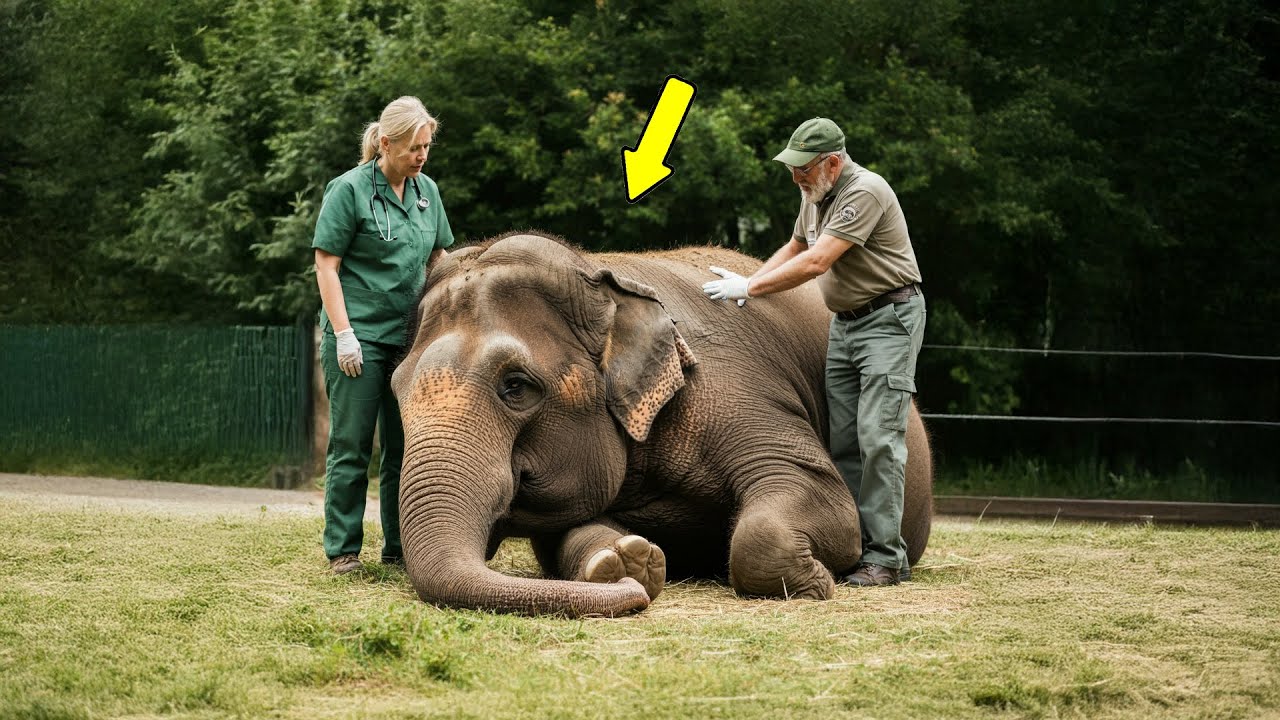A bright yellow face is framed to perfection by a black mask, a green belly, and two stylish tail streamers.
Meet the Rainbow Bee-eater
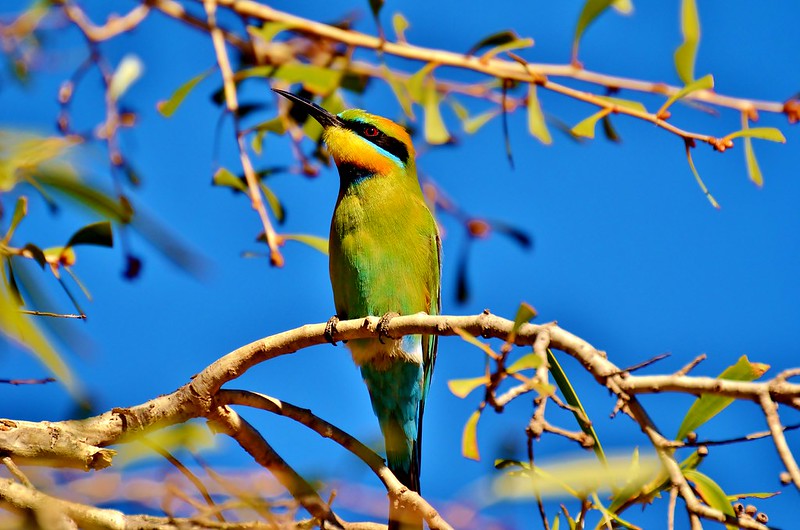
Photo Courtesy of Laurie Boyle / CC BY-SA 2.0
The rainbow bee-eater (Merops ornatus) measures 7 to 8 inches in length which includes those elongated tail feathers. The upper back area and wings are green, with the lower back and rump a bright blue. The underside of the wings are red tipped in black, and the tail ranges from black to violet depending on the bird. This bird’s two long tail feathers are longer than their other tail feathers and are in fact longer in the females than the males. The crown of the head, along with the stomach and breast, and throat are a pale yellow. The look is finished off by a black bib and a black ᵴtriƥe across the eye.
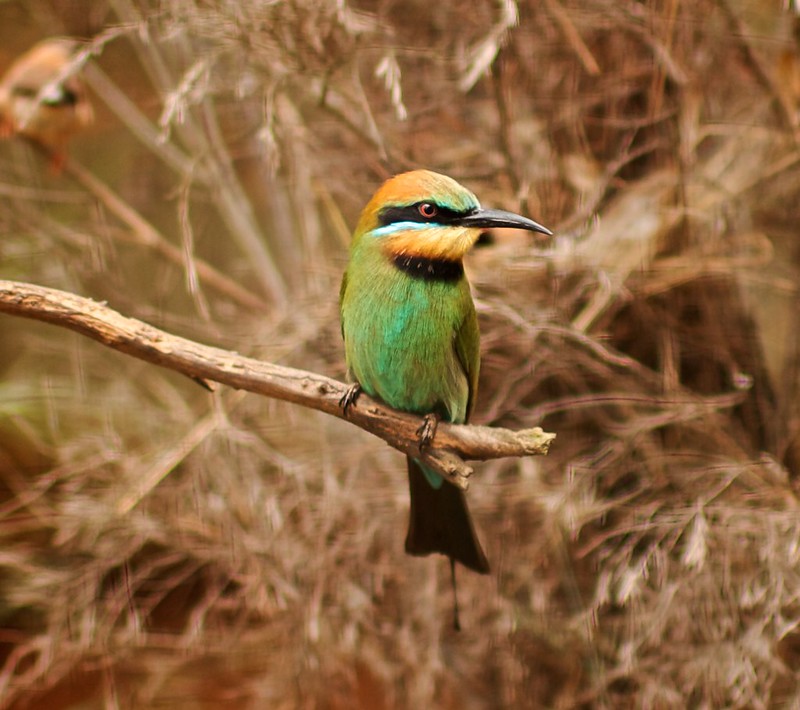
Photo Courtesy of VirtualWolf / CC BY-SA 2.0
The female looks similar to the male apart from the two elongated tail feathers which are longer than the males.
Juveniles have a green crown and lack the long tail feathers the adults have.
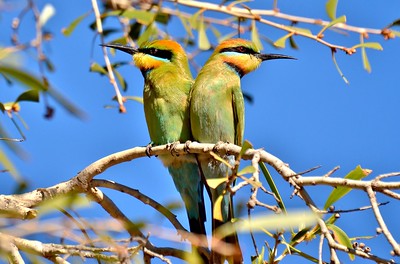
Photo Courtesy of Laurie Boyle / CC BY-SA 2.0
The rainbow bee-eater is the only species of Meropidae found in Australia.
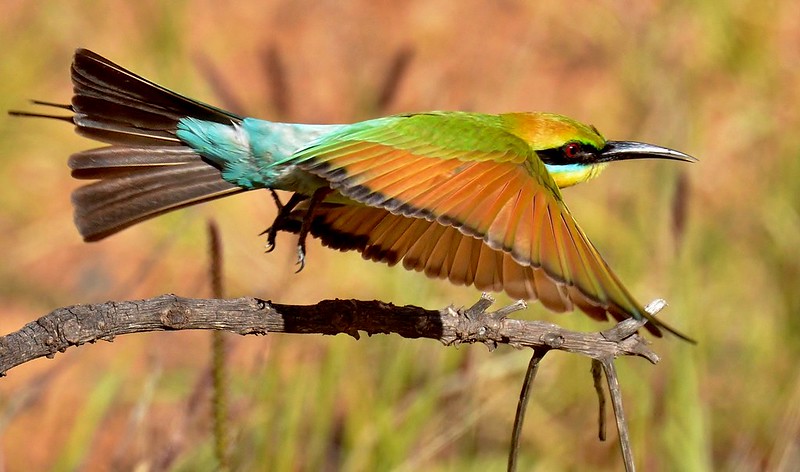
Photo Courtesy of Laurie Boyle / CC BY-SA 2.0
During summer these birds can be found in un-forested areas in most of South Australia and Tasmania. During winter they migrate to Northern Australia, New Guinea, and some of the more southern islands of Indonesia.

Photo Courtesy of Graham Winterflood / CC BY-SA 2.0
Rainbow bee-eaters are always watching for flying insects and can spot a potential meal up to 150 feet away, with, as their name suggests, a penchant for bees. Once it spots an insect a bee-eater will swoop down from its perch and catch it in its long, slender, black bill and fly back to its perch. Bee-eaters will then knock their prey against their perch to subdue it.
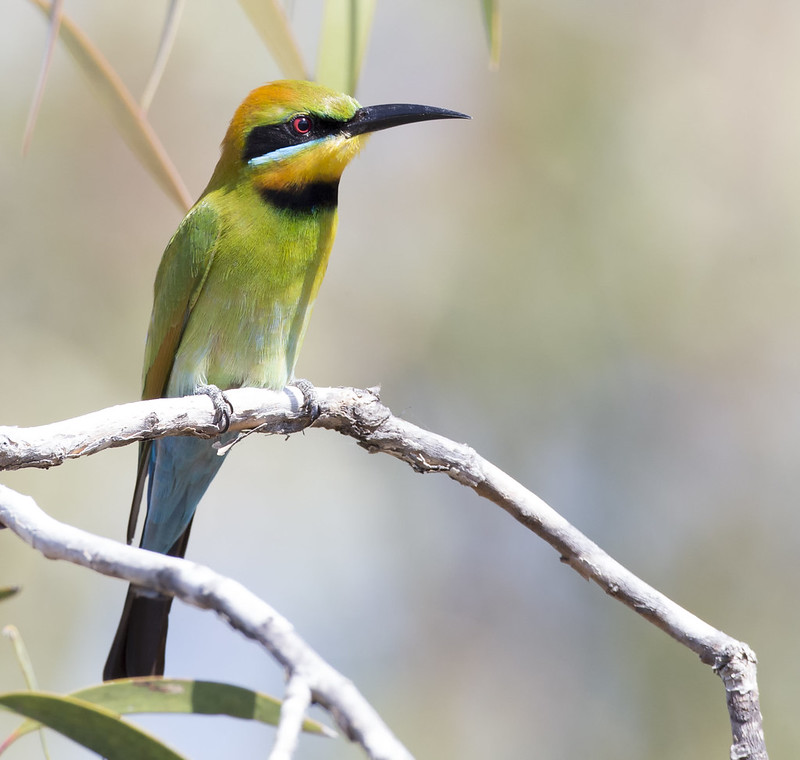
Photo Courtesy of Jim Bendon / CC BY-SA 2.0
Rainbow bee-eaters mate for life, breeding from November through to January in the south. The male will bring his mate insects while she builds a burrow for their nest. Making about three inches a day, after this, the female will then lay 3 to 7 white eggs within, which are incubated for around 24 days. The young are fed by both parents and possibly other birds and fledge after 30 days.

Photo Courtesy of Francesco Veronesi / CC BY-SA 2.0
The Rainbow Bee-eater is a common, migratory species with a wide distribution and stable population, which is classified as of least concern on the IUCN Red List.
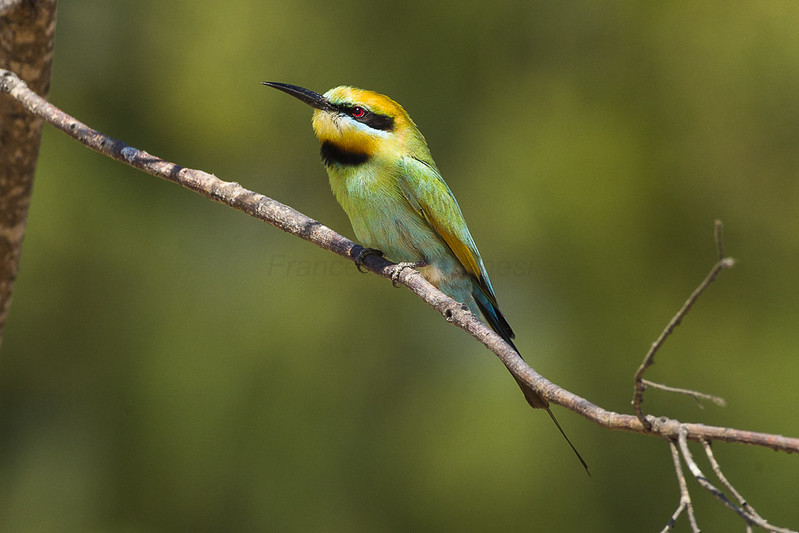
Photo Courtesy of Francesco Veronesi / CC BY-SA 2.0
You can watch and hear this bird right here in the video below:





